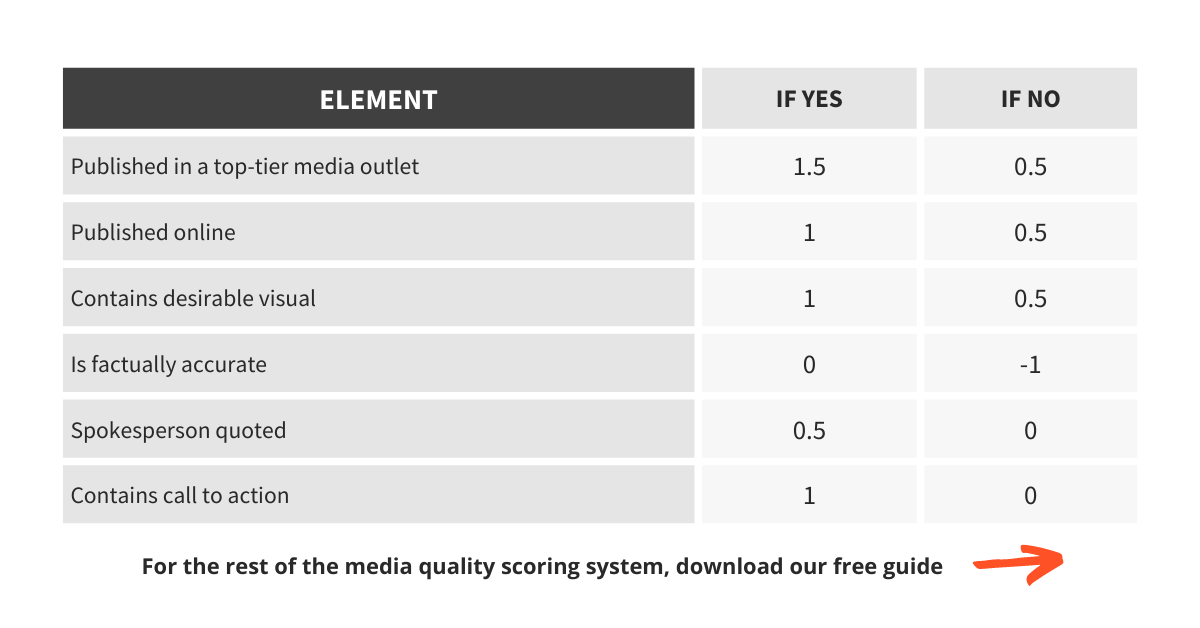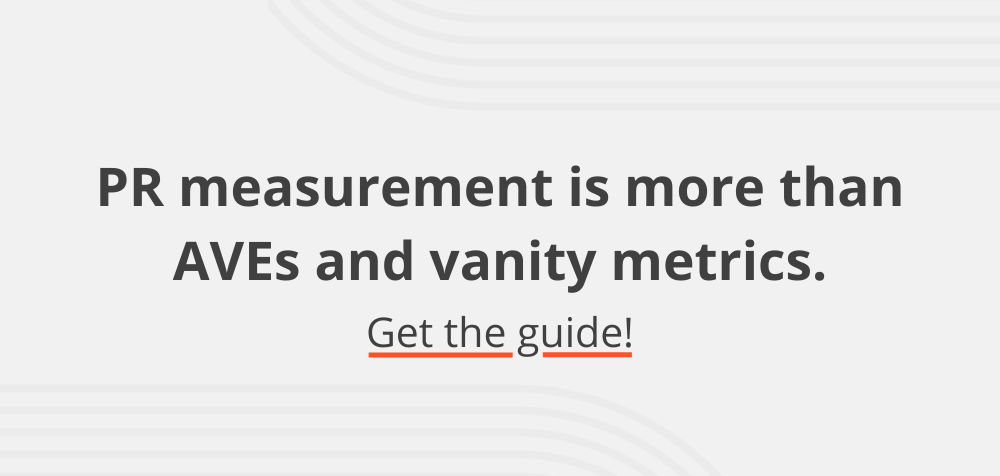Key performance indicators (KPIs) are measurable indicators of progress that show if you are achieving set objectives.
Before you determine what KPIs you should set for your PR objectives, you need to know what overarching business goal you will be aligning your PR efforts to. Is it to increase revenue? Build brand awareness? Launch a new product?
We’ll look at the five important KPIs for PR in Step 4, but there are three steps to follow first.
Step 1: Find out what’s important to the C-suite
A recurring theme that comes up when we speak with guests for our PR Profiles podcast is the sense that PR is finally getting a seat at the table, largely because practitioners are becoming more adept at showing how PR is an essential part of achieving organizational goals.
“The way you win your seat at the table is by mirroring exactly what other executives at that table are bringing,” said Karen Swim, President of Solo PR Pro, in her podcast interview. “You have to understand how you deliver value in a way that can be quantified to an organization. That means getting super comfortable making those connections between the work that you do and how they drive the business forward.”
Aligning yourself with and supporting larger organizational goals means you won’t be seen as a separate or side department, but an integral part of how that brand does business. It also means when downturns happen, yours won’t be the first budget cut. As Lindsey Groepper, President of BLASTmedia said in her interview, “When you ingrain yourself in the business, it’s a lot harder [for them] to cut that spend.”
Step 2: Determine your PR objectives
Goals are broad, long-term, and overarching. You’ve probably heard about the SMART formula for developing goals (if not, you can check out HubSpot’s great blog on the topic). Objectives on the other hand are specific, measurable actions that can be taken to achieve a goal.
For instance, the company goal might be to increase revenue by a certain percentage in a given market by the end of Q1. That satisfies the SMART formula since it’s specific, measurable, attainable, realistic, and timely.
Within that, your PR objective can be to build awareness and interest about a certain product in said market, thus increasing sales.
Step 3: Choose your PR activities
This is the “fun” part. Choosing the tactics that will help you achieve your objectives. Going back to our example in Step 2, how will you get word out about the product?
- Will you run an earned media campaign targeting trade publications?
- Are you going to try and get a spokesperson on TV to talk about it?
- Will you work with an influencer?
Step 4: Set your KPIs for PR
Going back to the definition of KPIs, what measurable indicators of progress will you select to show if you are achieving your PR objectives?
Note: Measurement requires benchmarks. If you don’t know where you started (benchmark), how will you know how far you’ve come? Look at your media coverage, web traffic, social media followers, or whatever aligns with your KPIs, for the last month, quarter, or year.
Depending on your objectives and tactics, some of the following KPIs for PR may not be relevant to you this time around.
Share of Voice
If increasing brand awareness is an objective, then this is an important metric. Share of Voice tells you what percentage of media coverage about your industry mentions or focuses on you verses your competitors. Are your efforts serving to increase your share of voice or are your competitors still getting talked about more than you?
Call to action response
Your activities should include a call to action, and you should have a way of measuring how many people take that action (could be Google Analytics, HubSpot, media monitoring, social listening, etc.). Perhaps it’s having people fill out a registration form, visit a specific landing page, or share something on social.
Sentiment
Reputation is everything. If an organizational goal was to improve reputation, then measuring sentiment (negative, positive, or neutral) is important as it will allow you to see how you’re being perceived. You can organize it by media type too: traditional and social. The right media monitoring and social listening tools are essential for sentiment.
Increased web traffic
Unless your earned media has secured backlinks and you can see referral traffic to your website, you may not be able to identify a direct connection between your activities and web traffic. But you can look at web traffic and note if there are spikes and then cross reference this against your campaign. For example, did you send out a release on a day the web traffic spiked?
Media mentions
This is a straightforward one. If your activity was an earned media campaign, then measuring how much pickup you got just makes sense. You’ll need a media monitoring tool—hopefully one that tracks traditional, online, and social media—to make sure you’re not missing a mention.
You should also consider not just the quantity of mentions, but the quality.
Media quality scoring system
This system considers what desirable elements need to be in a piece of earned media for it to have a positive impact, and what undesirable elements would have a negative impact. Here’s an example of a framework which awards or detracts points depending on whether certain criteria are met:
In this instance, the higher the score, the higher the quality of the coverage.
Quality scoring can be a time-consuming process and you may not have the bandwidth to do this for every piece of media coverage you receive. Maybe you’ll want to focus on a subset depending on what’s important, such as print and online. Or, you may want to consider a media intelligence service, where a team of trained analysists can do this type of quality scoring for you.
Prominence score
Agility’s media monitoring platform provides users the power to measure and report on the quality of coverage by generating a prominence rating for each saved media mention.
Prominence is derived by Agility from the positioning of your keywords within articles, the media type, and the frequency of keyword mentions. You can see what percentage of your coverage rates highly for prominence, keyword by keyword.
Step 5: Measure impact
Proving impact in a way that the C-suite will understand, appreciate, and care about isn’t an easy task. But it can be done, and if you’ve followed steps 1-4, it’s simpler than you might think.
For more on the final step, download our free guide, Measuring Impact: How to Connect PR Activities and Outcomes to Business Goals.










